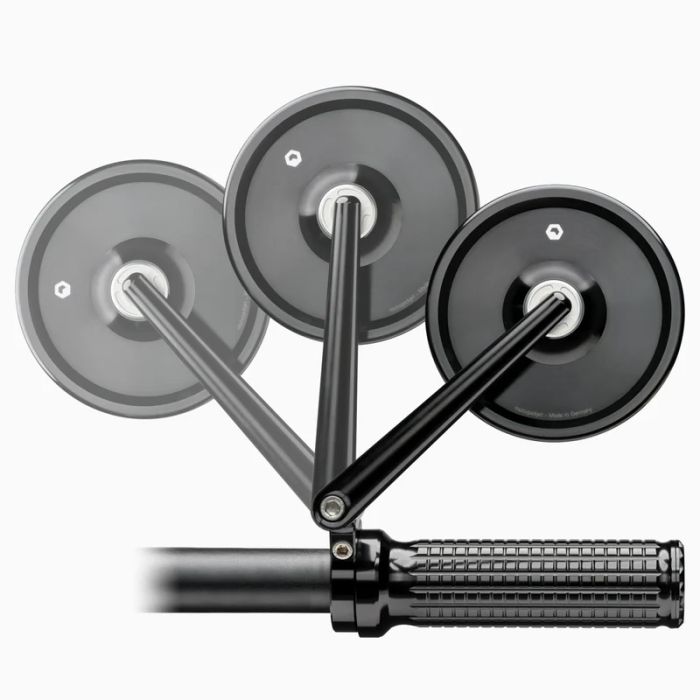mo.view classic 110 pivot
mo.view classic 110 pivot for 1" bars
mo.view classic 110 pivot
The compact solution with 110mm (4.3") arm length, for scrambler or super moto. Quick installation with a wide range of mounting options without modifications to the handlebars. The high-quality, CNC-milled folding clamp is extra narrow for minimum space requirements. The integrated flip mechanism for folding the mirrors is ideal for narrow passages, when transporting bikes or when there are space problems in the garage. The mirror can be mounted above or below the handlebars.
Our glassless mirror series mo.view is unique in the world. The special feature of our mirrors is the patented mirror surface, which is worked directly from the metal of the body. The aluminum itself is the mirror surface.
The mirror body is very thin and light, resulting in a weightless design without a rim or frame. The convex mirror surface is produced by flycutting using diamond tools on ultra-precision machines in Berlin. It is then made resistant to oxidation, corrosion and abrasion by an elaborate plasma coating in a vacuum.
The mirror body, mirror arm and clamp are milled from solid aluminium on CNC
machines and anodized to a high quality. All screws are made of stainless steel. The precise ball joint allows the mirror to be adjusted comfortably and very stably. Broken or fallen out glasses are simply not possible.
The add-on mirror can be mounted above or below the handlebars. The arm can be swiveled and locks into place in 45° steps. The mirror is suitable for the right and left side. It is mounted on the handlebars, depending on the version for 7/8" or 1" handlebar diameter. A free handlebar area of 10 mm width is required for mounting, no modifications to the handlebars or fittings are necessary.
Cleaning: Use a mild cleaning agent and a microfiber cloth to remove
dirt, dust and other residues from the surface of the mirrors.
Avoid abrasive cleaning agents that could damage the surface.
Dimensions
Diameter of the mirror body: 99 mm
Thickness of the mirror body without ball head: 5.6 mm
Length of the mirror arm: 110 mm
can be used for 22.2 mm (7/8 inch) or 1 inch handlebars, depending on the version
Clamp width: 10 mm
Weight: 260g
Scope Of Delivery
1x rear-view mirror mo.view classic 110 pivot, with 110mm arm
1x pivot clamp
QR code for mounting and operating instructions
How It's Made
Insights into the production of the mo.view motorcycle mirrors
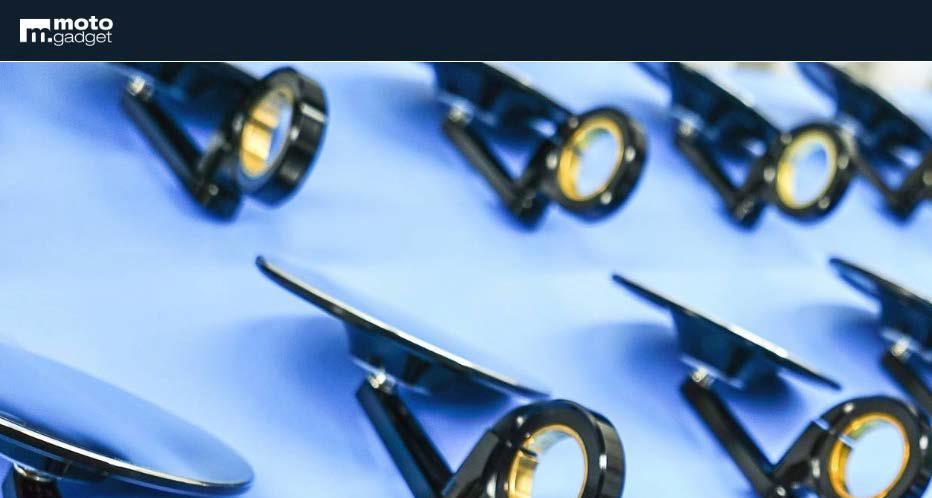
February 2019
A mirror without glass? That sounds about as daring as a tire without rubber. But the ingenious heads of motogadget have made the impossible possible. Thanks to cutting edge technologies, their high-tech mirrors are more robust, lighter and slimmer than ever before. So what is their secret? Standstill is regression. Not only has the vernacular known this, but also the motogadget team. For many years, the brand from Berlin has stood for truly sophisticated motorcycle accessories. Indicators, push buttons, instruments, switching electronics - if you focus on quality when customizing, you can't avoid motogadget products. The main reason for the company's success is constant progress - an integral part of the company's development.
"For us, innovation is simply the only way" says co-founder Garrit Keller, underlining motogadget's self-image. As the head of development, he is extremely interested in sounding out technical limits. It is his very personal drive that shapes the entire company. The new Metalmirror mirrors without glass are the best proof of this.
Conventional motorcycle mirrors are rather heavy and sometimes not very elegant. The mirror surface made of glass is a real Achilles verse, can jump out of the frame or break. In the event of a fall, the glass even poses a risk of injury. The aim of the new motogadget mirrors called mo.view is to avoid all these disadvantages by using state-of-the-art production methods. And indeed, the ten different mo.view models are completely different from other mirrors. Because their aluminum body, milled from solid material, itself becomes a mirror surface!
The result is a weightless design without a rim or frame. The mirror becomes particularly thin and light.
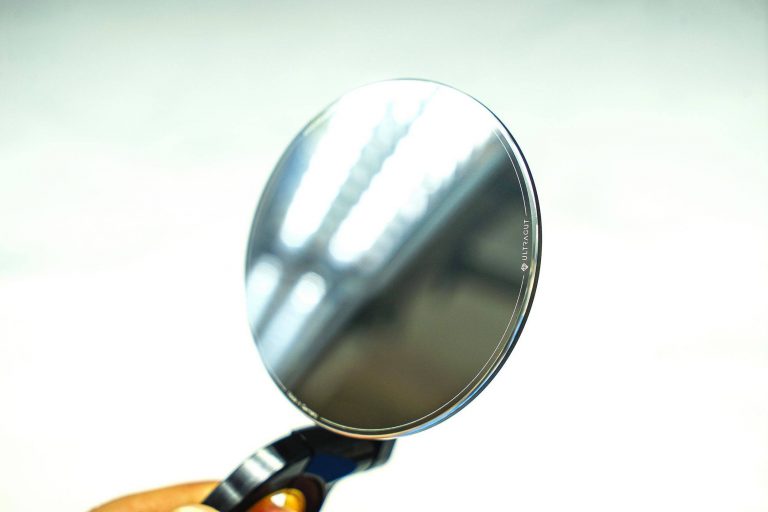
No glass, no problems. A simple but completely new design approach. One inevitably wonders why nobody came up with this idea before. But when you look into production, the question answers itself: The consistent renunciation of glass requires extremely precise manufacturing with extremely high expenditure and specially trained specialists who monitor every production shift. In a patented process, motogadget has succeeded in combining technologies from space travel, science and the semiconductor industry. The mo.view production hall is therefore more like a clinical laboratory. Artificial light shines onto clean work surfaces, blowers keep man-high machines cooled. Computer displays are operated by experienced employees, it smells like chemical cleaning agents.
The result of years of research and testing is a multi-stage, complex manufacturing process that begins with the production of mirror blanks. Thick, 2 meter long aluminum rods are cut into thin slices on a band saw and then machined in a CNC milling machine. 90% of the material is removed and later recycled. After anodizing and marking with a laser beam, the edge and the metal mirror surface are milled over again.

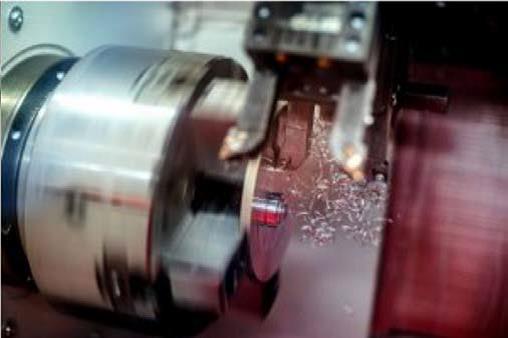
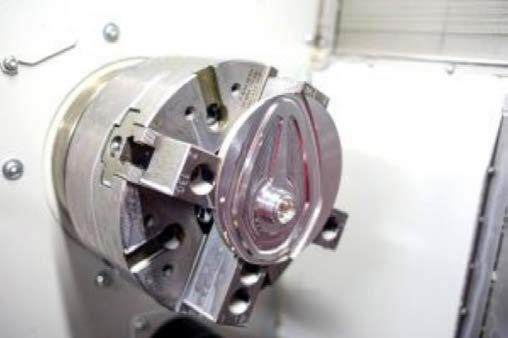
Then the "ultracut" takes place. A natural diamond with 0.5 carat removes an ultra-fine layer (0.001 mm) from the spherical mirror surface - less than 2% of a human hair. The chip itself is so light that it floats almost weightlessly in the air. The ultra-precision machine required for this achieves a roughness of 0.000002 mm. It is responsible for the fact that the metal surface reflects at all. The term of a mirror-smooth surface does not come now times from by chance. A normal milling machine would be hopelessly overwhelmed in view of the necessary precision in the nanometer range. The custom-made machine for mo.view production therefore has air-bearing spindles, hydrostatic axes and vibration-free machine beds made of solid granite. The device weighs several tons.


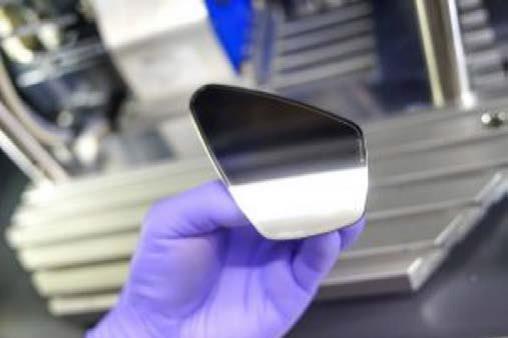
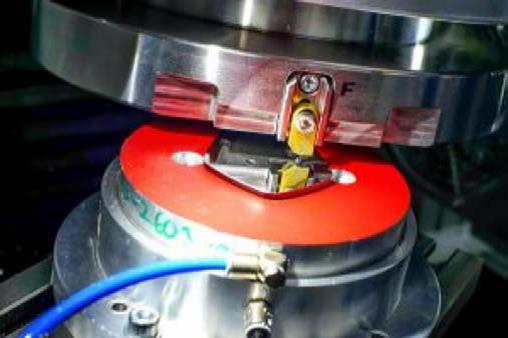
Big effort for small dimensions. But meticulousness is only one side of the coin. It is also indispensable to make the unprotected aluminum surface of the metal mirrors resistant to oxidation, corrosion and scratches in tough everyday motorcycle life. Motogadget faced another challenge. Scratch resistance comparable to that of glass can only be achieved by coating it with silicon dioxide (SiO2) - the main component of quartz glass.
Together with the Fraunhofer IFAM, a unique high-frequency low-pressure plasma coating system was therefore developed. That sounds complicated, and it is. The PECVD process (plasma-enhanced chemical vapor deposition) takes about one hour per work step and coats the mirror surface with a thin layer. Ionized particles are added to the vacuum as gas or liquid by a high-frequency energy source and are deposited on the mirror. These molecules are also called "precursors".
However, the smallest impurities leave defects on the mirror, which is why each component is first cleaned by hand in a dry ice jet.
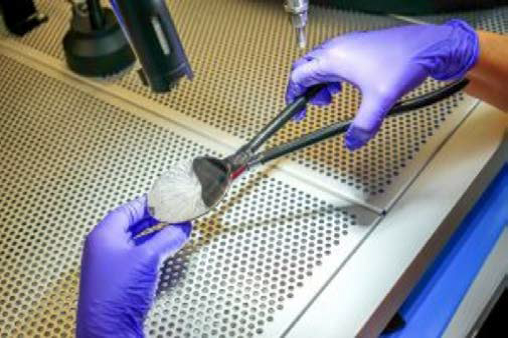
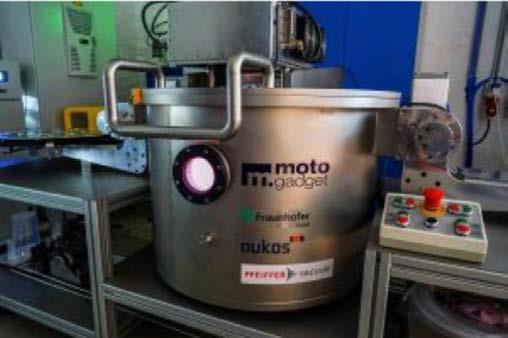
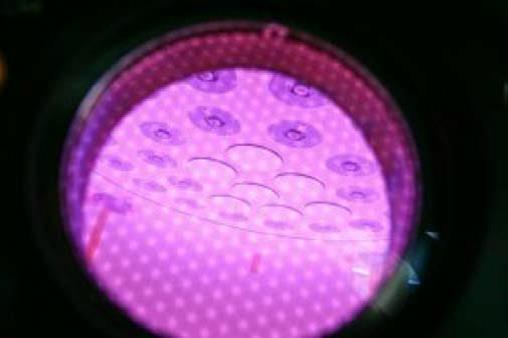
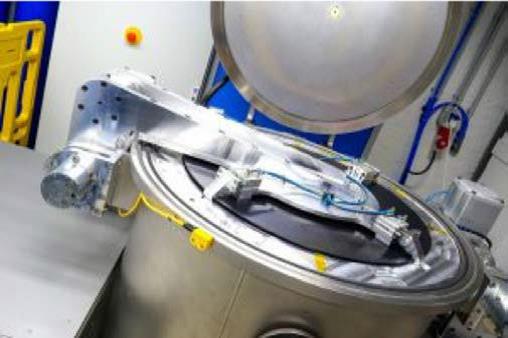
The subsequent quality control confirms the success of the unbelievably high expenditure: The layer thickness of the silicon dioxide is only about 0.003 mm, but makes the aluminum fit for the fight against all environmental influences on the road. In addition, each mo.view mirror is around five times lighter than conventional aluminum mirrors due to the absence of glass. No glass can shatter any more. Instead, the mirrors are extremely thin and even meet the legal requirements with a smaller diameter (8 of 10 mo.view models are ECE-tested and road legal). A frame for the glass can be dispensed with completely, especially since the high optical quality of the mirror surface ensures perfect vision without distortion or double images.
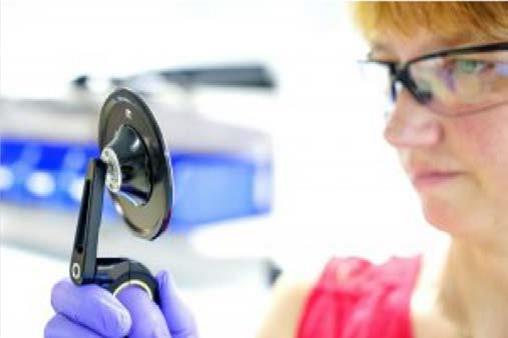
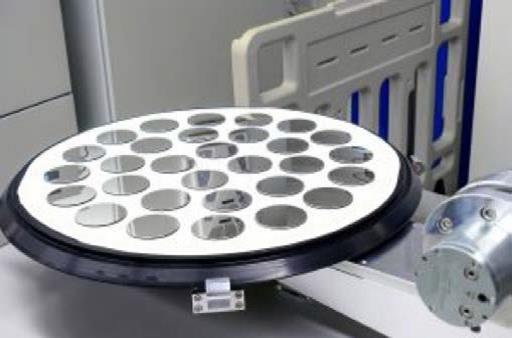
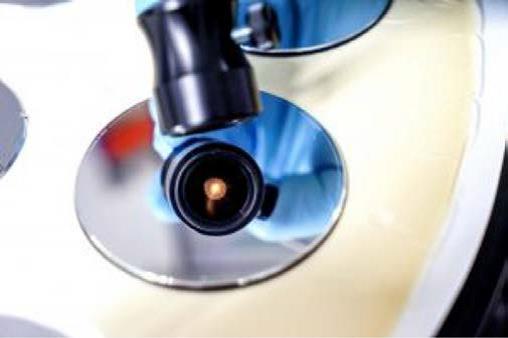
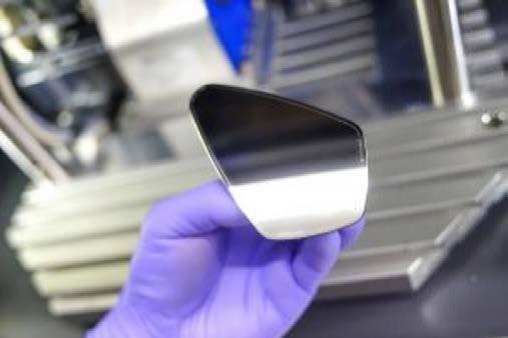
Cleaning and final assembly seem almost simple due to the innovative technologies, but speak for the manufactory part of the production. motogadget mirrors from the heart of the capital are attached to arms made of CNC-milled, anodized aluminum and fixed by hand using stainless steel screws. Precise ball joints allow a comfortable, stable adjustment later on. The motogadget staff protects the mirrors with a protective film and the packaging until they are used.
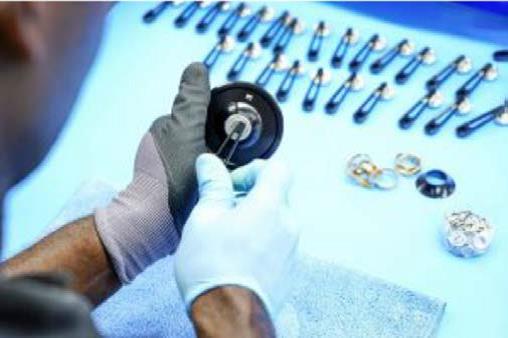
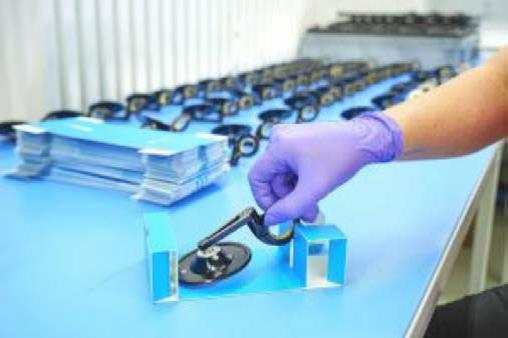
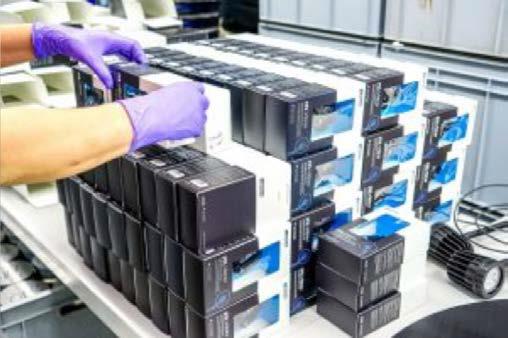
Text and photos: Sven Wedemeyer

